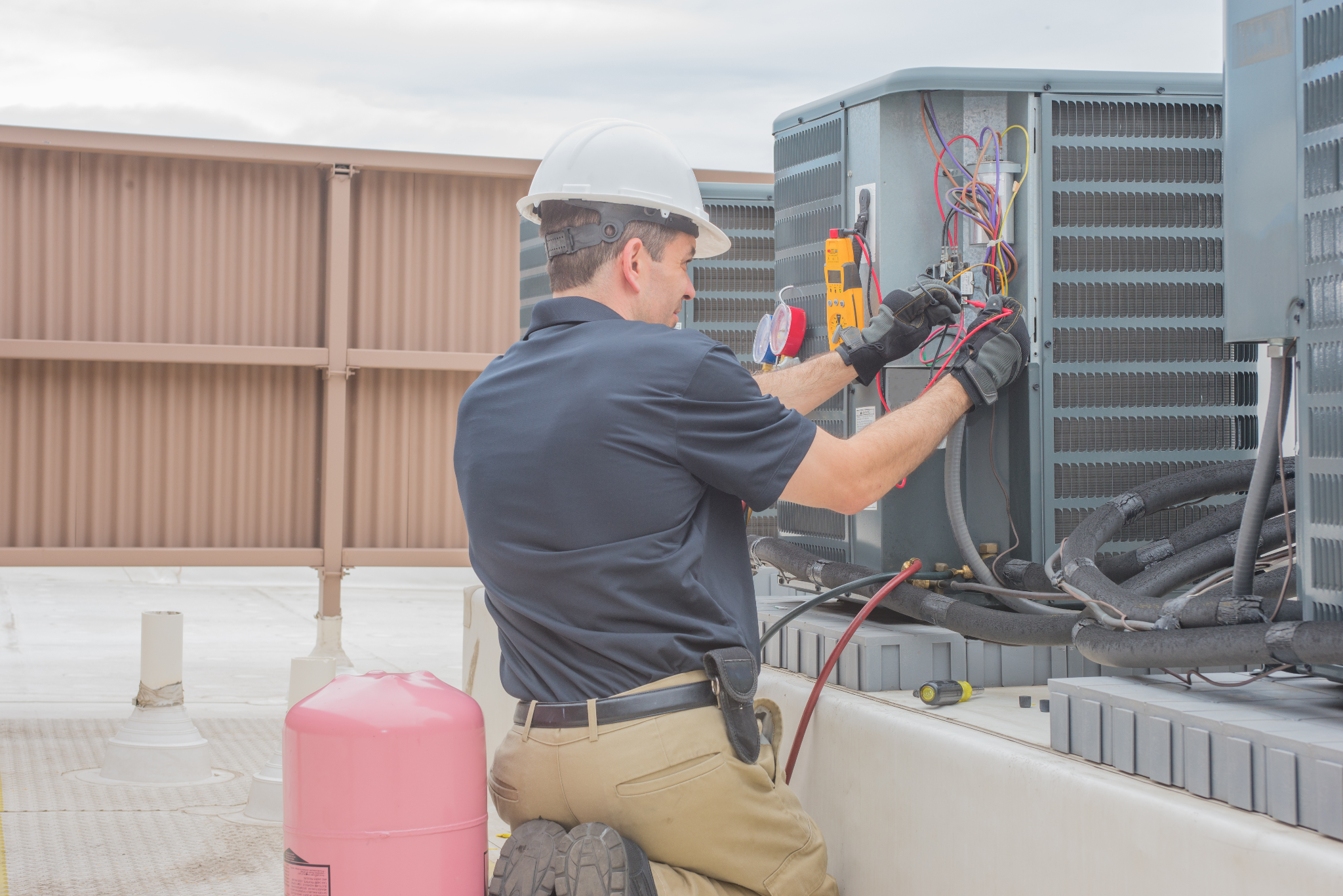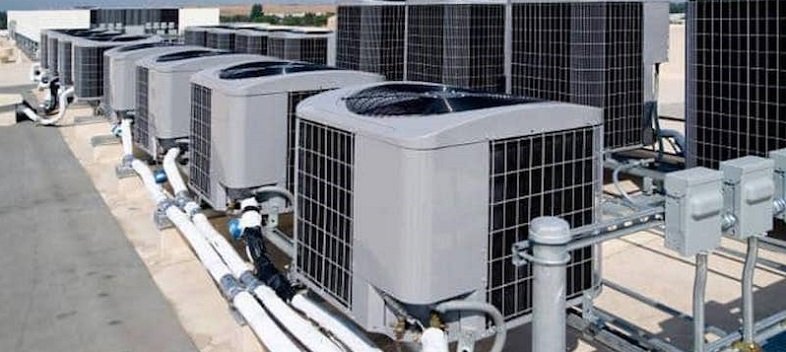Boost Your Home’s Efficiency with Routine heat pump service
Exactly How a Heatpump and Furnace Job Together to Optimize Your Home's Heating Efficiency
Understanding how a heat pump and heater job together is necessary for house owners seeking reliable home heating remedies. Each system has its staminas, providing a well balanced technique to home convenience. The heat pump masters modest temperatures, while the heater provides quick warmth throughout severe cold. This harmony not just decreases energy prices yet likewise enhances the life expectancy of both appliances. What factors affect this collaboration, and just how can property owners maximize their advantages?
Understanding Warm Pumps: Exactly How They Work
Although many individuals might be unknown with their inner operations, heatpump play an important duty in contemporary heater. These gadgets operate by transferring warmth from one place to an additional, utilizing the principles of thermodynamics. In cooler months, a heat pump essences warmth from the outdoors air, ground, or water, and transfers it indoors to warm up the living space. On the other hand, throughout warmer months, it can reverse the procedure, serving as an air conditioning system by removing warmth from inside to the outside.Heat pumps contain an evaporator, condenser, expansion, and compressor shutoff. The cooling agent within the system takes in warm as it vaporizes at reduced temperature levels and pressures. The compressor then enhances the stress and temperature level of the refrigerant, enabling it to release warm as it condenses. This efficient procedure can greatly minimize energy usage contrasted to typical home heating approaches, making heat pumps a sustainable selection for environment control in homes.
The Role of Heating Systems in Home Heating
Furnaces play an important duty in home heating by supplying a trustworthy resource of heat during the cooler months. They operate by generating warm via burning or electric resistance, distributing it throughout the home through air ducts or glowing systems. The effectiveness of a furnace is usually gauged by its Yearly Fuel Usage Efficiency (AFUE) score, which indicates just how efficiently the system converts gas into heat.Furnaces can utilize numerous power sources, consisting of gas, gas, electrical energy, or oil, allowing property owners to choose the most appropriate choice for their requirements. Unlike heatpump, which might struggle in severe cold, furnaces maintain constant efficiency, making certain that indoor temperatures continue to be comfortable no matter of outside problems. Additionally, contemporary furnaces frequently come equipped with sophisticated modern technology, such as variable-speed blowers and wise thermostats, improving their efficiency and responsiveness. This flexibility makes heaters a vital element in comprehensive home heating strategies.

Benefits of Making Use Of Both Solutions Together
Combining the staminas of both heating systems and warm pumps can result in a more effective and efficient home heating remedy. Using both systems enables homeowners to take advantage of the warm pump's power performance during milder temperatures while counting on the furnace for even more extreme cold problems. This twin strategy can substantially decrease energy costs, as heatpump consume much less electrical power than standard home heating techniques when temperature levels are moderate.Additionally, utilizing both systems together can improve comfort degrees in the home. Heatpump can give constant, even home heating, while heaters can promptly increase ambient temperatures when required. In addition, the combination of both systems can expand the life-span of equipment by lowering deterioration on each device, as they share the workload. Eventually, property owners can enjoy a balanced, cost-efficient home heating solution that changes seamlessly to varying weather, making sure a cozy and inviting home throughout the cold weather.
Exactly How Warmth Pumps and Furnaces Complement Each Other
When property owners incorporate heatpump and heaters, they create a corresponding heating unit that takes full advantage of performance and convenience. Heatpump operate by moving warm from the outdoors air or ground, making them extremely effective in moderate climates. They stand out during milder temperatures, supplying economical home heating. Alternatively, heating systems produce warm with combustion or electric resistance, delivering strong, instant heat during severe chilly conditions.The combination of these 2 systems permits vibrant modifications based on temperature level changes. Throughout warmer months or milder winter days, the heatpump can take the lead, saving energy and lowering prices. As temperatures decline, the heater can effortlessly involve, ensuring consistent heat throughout the home. This harmony not just maximizes power use however likewise boosts the life-span of both systems, as each device runs within its perfect efficiency variety. Together, they develop a balanced atmosphere that adapts to differing climate demands.
Optimizing Efficiency: Tips for Homeowners
Home owners can enhance their heating efficiency via a number of useful techniques. Establishing a normal maintenance schedule, integrating wise thermostat technology, and applying efficient insulation website here and securing options are essential actions. These steps not only boost comfort yet additionally lower energy prices.
Normal Upkeep Arrange
To guarantee maximum home heating efficiency, developing a normal upkeep schedule is important for any home. House owners should focus on regular examinations of both heat pumps and heaters to determine peak efficiency. This consists of transforming air filters each to three months, as blocked filters can substantially reduce effectiveness. Furthermore, organizing expert upkeep a minimum of yearly permits service technicians to recognize and attend to possible concerns before they intensify. Property owners should additionally clean up the heatpump's outdoor unit to avoid debris build-up that can prevent air flow. By adhering to a normal maintenance schedule, house owners not just enhance their home heating systems' effectiveness but likewise extend their life expectancy, bring about greater comfort and minimized power expenses throughout the chillier months.
Smart Thermostat Integration
Incorporating a wise thermostat right into a other home furnace can greatly enhance power efficiency, particularly as it permits accurate control over temperature setups. These tools can find out the house owner's routine and choices, instantly adjusting the temperature level to optimize comfort while decreasing power usage. They can decrease heating throughout times when the home is empty, lowering unnecessary consumption. Numerous wise thermostats likewise supply real-time power usage information, making it possible for house owners to make informed decisions regarding their home heating behaviors. In addition, remote gain access to by means of mobile phone apps allows customers to change setups from anywhere, guaranteeing the home is warm upon return. On the whole, clever thermostat integration not only boosts comfort however considerably adds to power cost savings and efficiency.
Insulation and Securing Solutions
Smart thermostats play an essential function in energy efficiency, yet their efficiency can be substantially improved by correct insulation and securing services. Property owners ought to focus on shielding wall surfaces, attics, and floors to reduce warmth loss. High-grade insulation materials, such as spray foam or fiberglass, can substantially enhance thermal resistance. Additionally, sealing gaps around air ducts, doors, and windows prevents cool air seepage and warmth escape. Weatherstripping and caulking are reliable approaches for addressing these leakages - ductless mini splits. Routine evaluations for air leakages, together with the usage of blower door examinations, can help determine issue locations. By buying insulation and sealing, property owners can optimize the performance of their heater, inevitably causing lowered power consumption and lower energy costs
Typical Myths Regarding Heat Pumps and Furnaces
What misunderstandings border heatpump and furnaces? Several people mistakenly believe that heatpump are inefficient in cooler environments. In reality, contemporary warmth pumps are created to operate successfully also in low temperature levels, providing reliable home heating throughout winter months. One more typical myth is that heating systems are always much more reliable than heatpump. Nevertheless, this depends upon the particular power resources and efficiency rankings of the units concerned. Some might additionally believe that using both systems at the same time is unneeded, but actually, this combination can enhance home heating performance, particularly during extreme weather conditions. Additionally, individuals typically presume look what i found that warm pumps call for constant maintenance, when in truth, they have similar maintenance needs to conventional heating systems. By unmasking these misconceptions, homeowners can make more enlightened decisions concerning their heating alternatives, ultimately causing improved convenience and energy performance in their homes.
Maintenance Factors To Consider for Combined Solutions

Frequently Asked Inquiries
Can Heat Pumps Job Properly in Very Cold Climates?
Warmth pumps can battle in exceptionally cold environments due to minimized effectiveness and heat extraction constraints. Developments in innovation have actually led to versions created for better performance in such conditions, improving their feasibility in rough atmospheres.
How Much Time Do Warmth Pumps and Furnaces Typically Last?
Heat pumps usually last 15 to twenty years, while heaters have a life-span of 15 to 30 years. Regular maintenance can extend their longevity, guaranteeing reliable procedure and minimizing the requirement for premature substitutes.

What Is the Average Cost of Putting Up Both Solutions?
The ordinary price of setting up both a heatpump and a heating system generally varies in between $5,000 to $10,000 - ductless mini splits. Aspects influencing this expense consist of system dimension, setup intricacy, and regional labor rates
Exist Tax Obligation Motivations for Utilizing Energy-Efficient Home Heating Systems?
Numerous home owners ask about tax rewards for energy-efficient heating unit. Various government and state programs typically supply refunds or credit reports, encouraging the adoption of sustainable modern technologies to reduce energy usage and advertise environmental responsibility.
Just how Do I Pick the Right Size Heatpump and Heater?
Picking the right size heatpump and heating system includes computing the home's square video, considering insulation quality, and examining neighborhood environment. Consulting a specialist can assure suitable system performance and energy efficiency based on particular needs. heat pump service. Comprehending exactly how a warm pump and heating system work with each other is necessary for property owners seeking efficient heating services. In chillier months, a heat pump extracts warmth from the outdoors air, ground, or water, and transfers it inside to warm up the living room. When home owners incorporate warm pumps and heating systems, they produce a complementary home heating system that takes full advantage of effectiveness and comfort. Heat pumps run by moving warm from the outside air or ground, making them very reliable in modest climates. Warmth pumps can have a hard time in very cold climates due to lowered performance and warm extraction limitations